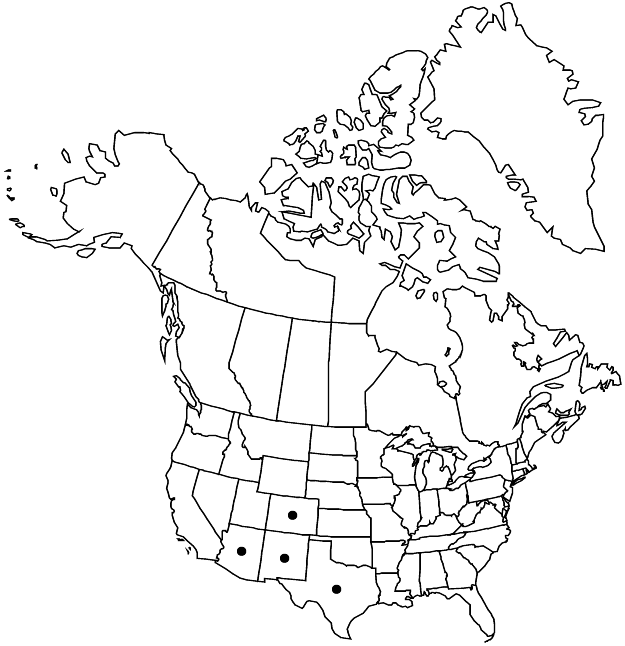Drymaria leptophylla var. leptophylla
Plants annual, herbaceous, glabrous, not glaucous. Stems erect, sparingly branched, 8–25 cm. Leaves mostly opposite; stipules ± deciduous, divided into 2 filiform segments, 0.3–1 mm; petiole absent or nearly so; blade linear to narrowly oblong, 0.5–2.5 cm × 0.2–1.2 mm, base attenuate, apex rounded to apiculate. Inflorescences terminal, open, (5–)15–75-flowered cymes. Pedicels shorter to longer than subtending bracts at maturity. Flowers: sepals with 3 prominent veins arcing outward at midsection and confluent apically, lanceolate to ovate (herbaceous portion lanceolate), 1.8–3.5 mm, unequal, with outer 2 often shorter (± 0.5 mm) than inner, apex acute to acuminate (herbaceous portion similar), hood oblique to apex, at least weakly developed on outer 2 sepals, glabrous or sessile-glandular; petals 2-fid for 1/2 or less their length, 1.3–2.6 mm, 1/2–1 times as long as sepals, lobes 1-veined, vein unbranched, linear, trunk absent, base gradually tapered, apex rounded. Seeds tan, snail-shell-shaped, lateral thickenings absent, 0.6–0.7 mm; tubercles minute, rounded. 2n = 36.
Phenology: Flowering late summer–early fall.
Habitat: Rocky or gravelly flats or slopes, disturbed areas in pine or oak woodland
Elevation: 1700-2400 m
Distribution

Ariz., Colo., N.Mex., Tex., Mexico (Baja California, Chihuahua, San Luis Potosí, Sonora).
Discussion
Selected References
None.